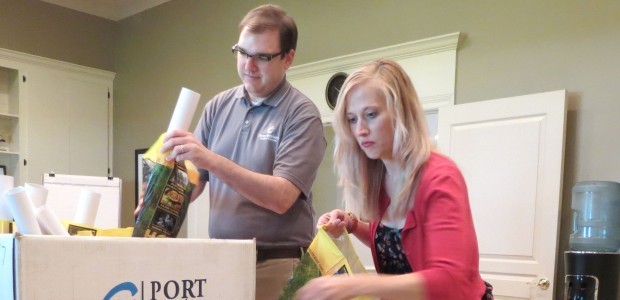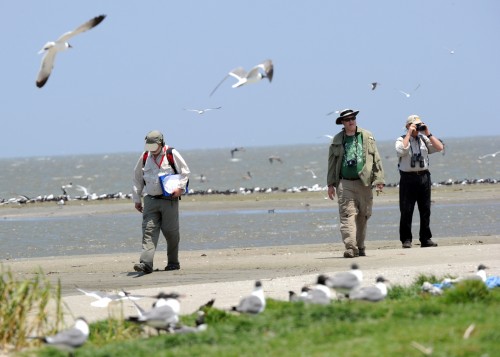
MTI calculates to keep oil supplies accurate
September 25, 2012
Best of the Bayou set to bring 25 musicians to Houma
September 25, 2012It has been more than 29 months since the April 20, 2010, Macondo blowout and BP Deepwater Horizon disaster. The massive explosion eventually released an estimated 4.9 million barrels of crude oil into the Gulf of Mexico, making it the largest accidental marine oil spill in history.
Oil and chemical dispersants damaged coastal beaches, marshlands and wildlife, and raised health concerns.
Immediate financial losses were experienced by fishing, tourism and other industries, including petroleum, with damages totaling hundreds-of-billions-of-dollars.
What has been forgotten by many people across the nation is the damage and recovery BP itself had to undergo, while at the same time working to make restitution and rebuild a positive reputation.
“Obviously, the first thing is the tragedy itself,” BP spokesman Ray Melick said. “We will never forget the 11 men whose lives were lost, and the impact on their families and communities. That will always be in our memory, and nothing can be done to fix that.”
Melick said that even as critics blasted BP for the accident and response time, company insiders acted to be accountable for damages, take the losses, and rebuild both business production and status.
A January 2013 federal court date is expected to determine ultimate federal fines, based on $3.5 billion BP has in reserves, against the oil and gas corporation. BP has already established a $20 billion trust, from which payments are made, spent more than $14 billion to cleanup impacted states and paid almost $9 billion in individual claims.
While other businesses and individuals were adversely impacted by the oil spill, BP experienced a loss of more than $3.3 billion in 2010.
Company earnings in 2011 made a turnaround and produced a net income of $26 billion. However, profits posted in 2011 were still impacted by lower production during 2010.
In a letter to shareholders, BP Group Chief Executive Bob Dudley said the corporation entered 2011 facing a range of uncertainties. “These included concerns about our ability to operate safely in deep water, meet our financial commitments in the Gulf of Mexico, and recover the trust and value we had lost. We were also subject to intense speculation around the future and direction of the company.”
Melick said by the end of 2011, the company had set new standards for safety, reshaped its business model and continued an initial $17 billion advertising campaign. During the past two years, BP has spent approximately $159 million promoting tourism in Gulf States.
“I think the word is getting out that the Gulf is back and a great place to vacation,” Melick said. “The waters are clean, the beaches are open and the seafood is safe to eat.”
The oil giant is credited as cooperating with investigations and has received permission to resume operations in the Gulf of Mexico.
Melick said a significant step taken by BP is a renewed focus on safety. “We set targets for ourselves,” he said. “We’ve taken concrete steps to enhance safety and risk management. We developed a more rigorous process for safety indicators and go beyond industry standards. We shared that industry-wide so everybody works together.”
As part of its safety enhancement, BP established a centralized safety organization, dedicated to oversight not only in individual work habits for employees, but also with new deepwater drilling standards, that again, exceed federal standards. “We’ve got a new capping system we are testing that will be there in the future,” Melick said.
“Any company [the size of BP] impacts just about the entire fabric of our community,” South Central Industrial Association President Ted Falgout said. “Luckily, this was a company that had the funding to be able to withstand this kind of catastrophe and come back and continue being the player it has been in the region.”
Falgout noted that both before and after the oil spill, BP and its more than 4,000 employees in Louisiana alone, has been civic-minded. In January, the company donated $4 million to Fletcher Technical Community College to develop a rig-worker curriculum.
“[BP has] helped many organizations and did so throughout this ordeal and continue to do so,” Falgout said.
Not everyone shares a positive view of BP’s efforts or comeback. Louisiana Bucket Brigade Program Manager Anna Hrybyk contends that neither BP nor any oil company has proven responsible in the Gulf of Mexico.
“This [is a] chronic problem of oil spills totaling over 4,000 in 2012, not just BP,” Hrybyk said.
As an environmental activist, Hrybyk said that BP and other oil companies have not kept up maintenance on operating sites and are to blame for offshore leakages from abandoned wells.
“Since the spill, we have been trying to draw a connection between what happened on the BP well to the 40,000 wells that are in the Gulf, particularly 35,000 abandoned wells that have never been plugged or appropriately lighted to be seen at night,” Hrybyk said.
Melick insisted that with new designs BP is being proactive in addressing issues related to wells with which it has any connection.
“The bottom line is, there are a lot of things that changed the company,” Melick said. “A lot of things that are not showing up in the short term, but we are still working through major transformations and making progress.”
Melick said BP is committed to the Gulf beyond making restitution. “We’ve got about 23,000 people in the U.S. working, making us the second largest oil and gas employer in America,” he said. “In addition, that supports 250,000 American jobs. There is a commitment to this country and being part of the energy future of the United States as well as the rest of the world.”
During the past five years, BP has invested $20 billion in its Gulf operations. The corporation intends to spend another $40 billion during the next decade.
BP is the largest deepwater leaseholder in the Gulf of Mexico, with six rigs presently operating and plans to make that eight by the completion of 2012.
“I think the [Deepwater Horizon] incident brought a new awareness to the rest of the country on the value of the Gulf, the importance of the environment and the economy of the Gulf.” Melick said. “Louisiana … is important to the rest of the country.”
Melick said BP will be judged differently by different people and in different ways. “I think most of us are proud of the company’s response and commitment shown,” he said.
At the height of the Deepwater Horizon disaster, BP received hard criticism from individuals and organizations around the world. In coastal Louisiana, while dealing with local concerns and working through administrative struggles, the company made a point of reminding locals it would not abandon the region and is here to stay.
“It is a benefit to our community that BP has been able to make it,” Falgout said.
Searching for ways to help restore the Gulf Coast has only been part of work for BP during the past two years. The company has taken broad steps in an effort to restore its reputation since the April 2010 Deepwater horizon disaster. Implementing safety and quality control standards that exceed federal requirements are now part of the corporation’s business plan.











